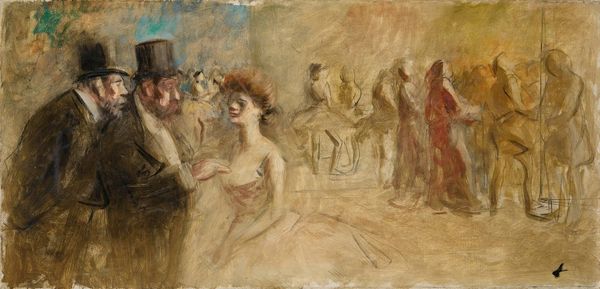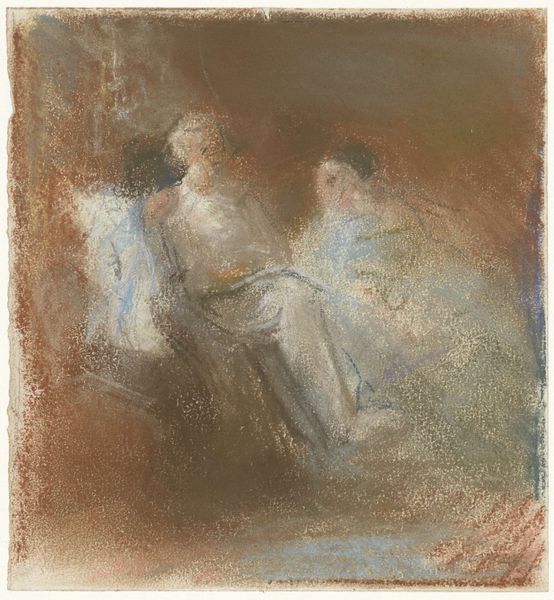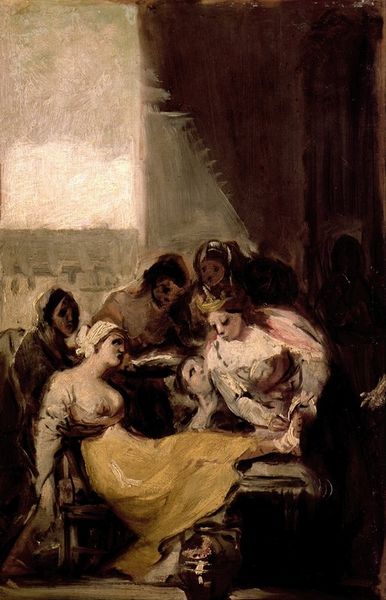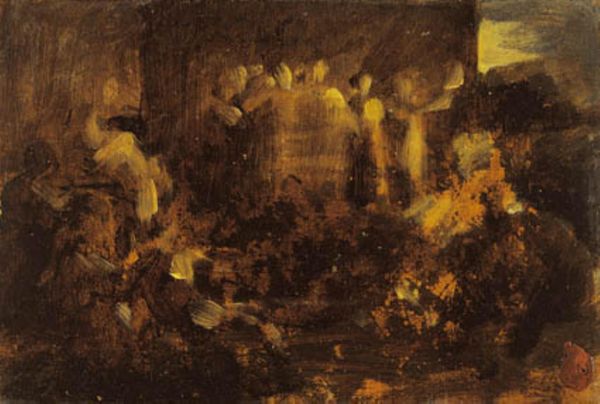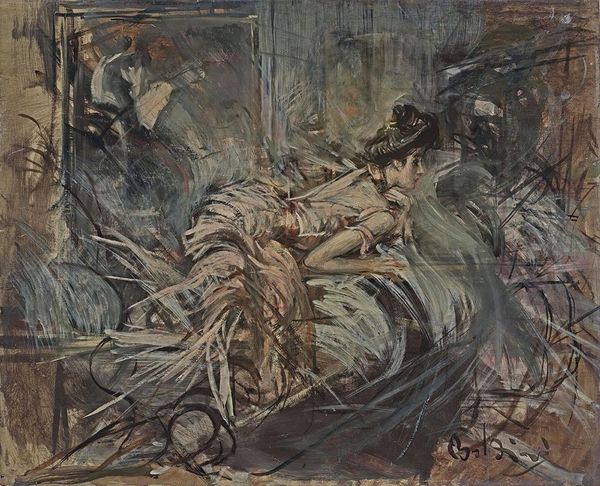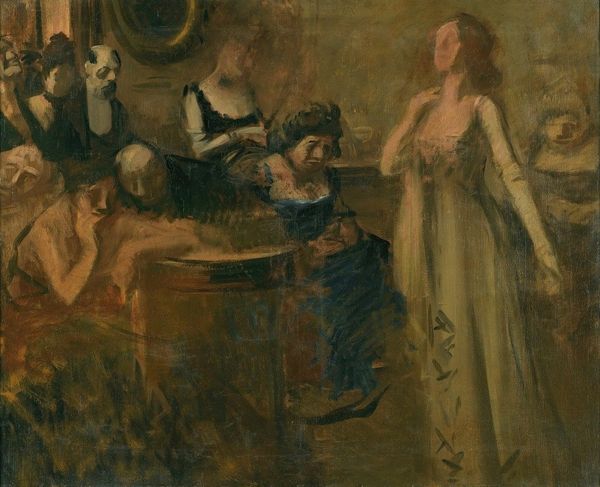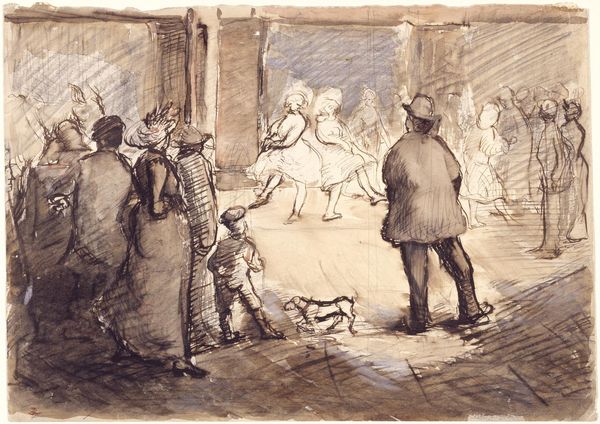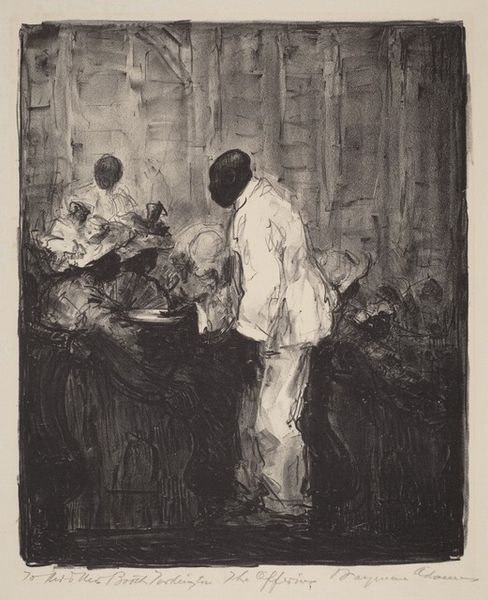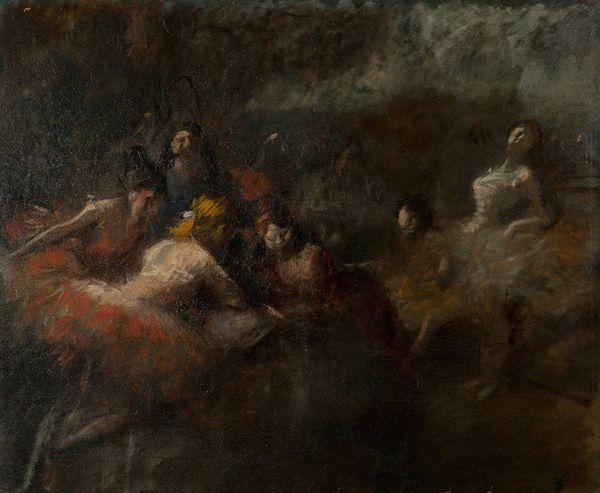
Dimensions: overall: 60.1 x 73.6 cm (23 11/16 x 29 in.) framed: 78.1 x 92.4 x 6.4 cm (30 3/4 x 36 3/8 x 2 1/2 in.)
Copyright: National Gallery of Art: CC0 1.0
Curator: Before us is "The Charleston" by Jean-Louis Forain, created around 1926. The oil paint gives the piece a somewhat hazy, dreamlike quality. What's your immediate reaction to it? Editor: My first thought is the visible application of paint—look at how freely he's sketched these figures. It really highlights the act of creation, almost a documentation of labor. The dancers look less like elegant figures and more like abstracted bodies in motion, wouldn’t you agree? Curator: I do, and I find it interesting how Forain positions the dancers amidst this somewhat stiff, almost caricatured, audience. The setting looks like a high-society cabaret, where the patrons observe and consume spectacle, not merely enjoy themselves. Editor: Right, there’s a distinct social dynamic. He emphasizes the means of presentation of these two dancers, drawing our attention to how class structures are on display. But even in the brushstrokes themselves, you sense that critique. Curator: Absolutely, especially if we consider the history of Forain's caricatures targeting the bourgeoisie. This wasn't just a scene he witnessed, but a social commentary he clearly felt compelled to make, capturing the era's changing morals post-World War I. Editor: It’s the visible materiality combined with that clear commentary, right? The looseness almost betrays a sense of urgent expression, questioning established boundaries within both the artistic world and social echelons. This oil painting certainly reflects an interesting tension of labor, class, and performance all playing out together. Curator: I agree. This work is more than a simple genre painting; it's a nuanced critique rendered through a modern lens, provoking reflections on class, spectacle, and the artist's role within that dynamic. Editor: Precisely. And it reminds us that the seemingly ephemeral joy of the Charleston had real material and social underpinnings, which Forain makes so palpable in this work.
Comments
No comments
Be the first to comment and join the conversation on the ultimate creative platform.
